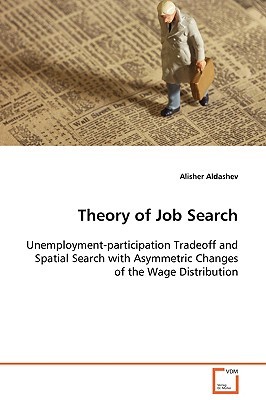
- We will send in 10–14 business days.
- Author: Alisher Aldashev
- Publisher: VDM Verlag
- ISBN-10: 3639080734
- ISBN-13: 9783639080735
- Format: 15.2 x 22.9 x 0.5 cm, minkšti viršeliai
- Language: English
- SAVE -10% with code: EXTRA
Theory of Job Search Unemployment-participation Tradeoff and Spatial Search with Asymmetric Changes of the Wage Distribution (e-book) (used book) | bookbook.eu
Reviews
Description
The book provides a deeper insight into the search theory and takes a look at two aspects of the job search. Firstly, withdrawals from the labor market have received so far unfairly little attention. Although withdrawals from labor force are a logical outcome of the nonstationary job search. The outcome of the model is that lower reservation wages besides shorter unemployment duration also lead to higher exit rate from unemployment into nonparticipation. This tradeoff can be very important for unemployment insurance policy. Another important aspect is an asymmetric change of the wage offer distribution. In a standard search model reservation wages increase with the mean of the wage offer distribution and with the mean-preserving spread of the wage distribution. However, changing the spread of the distribution by holding the mean constant implies a symmetric "stretching" or "compression" of the distribution in the tails. But what happens if the spread parameters for the left tail of the wage distribution and for the right tail may vary separately, which is usually the case when one faces the actual data? The book provides answers to this question.
EXTRA 10 % discount with code: EXTRA
The promotion ends in 22d.06:45:39
The discount code is valid when purchasing from 10 €. Discounts do not stack.
- Author: Alisher Aldashev
- Publisher: VDM Verlag
- ISBN-10: 3639080734
- ISBN-13: 9783639080735
- Format: 15.2 x 22.9 x 0.5 cm, minkšti viršeliai
- Language: English English
The book provides a deeper insight into the search theory and takes a look at two aspects of the job search. Firstly, withdrawals from the labor market have received so far unfairly little attention. Although withdrawals from labor force are a logical outcome of the nonstationary job search. The outcome of the model is that lower reservation wages besides shorter unemployment duration also lead to higher exit rate from unemployment into nonparticipation. This tradeoff can be very important for unemployment insurance policy. Another important aspect is an asymmetric change of the wage offer distribution. In a standard search model reservation wages increase with the mean of the wage offer distribution and with the mean-preserving spread of the wage distribution. However, changing the spread of the distribution by holding the mean constant implies a symmetric "stretching" or "compression" of the distribution in the tails. But what happens if the spread parameters for the left tail of the wage distribution and for the right tail may vary separately, which is usually the case when one faces the actual data? The book provides answers to this question.


Reviews